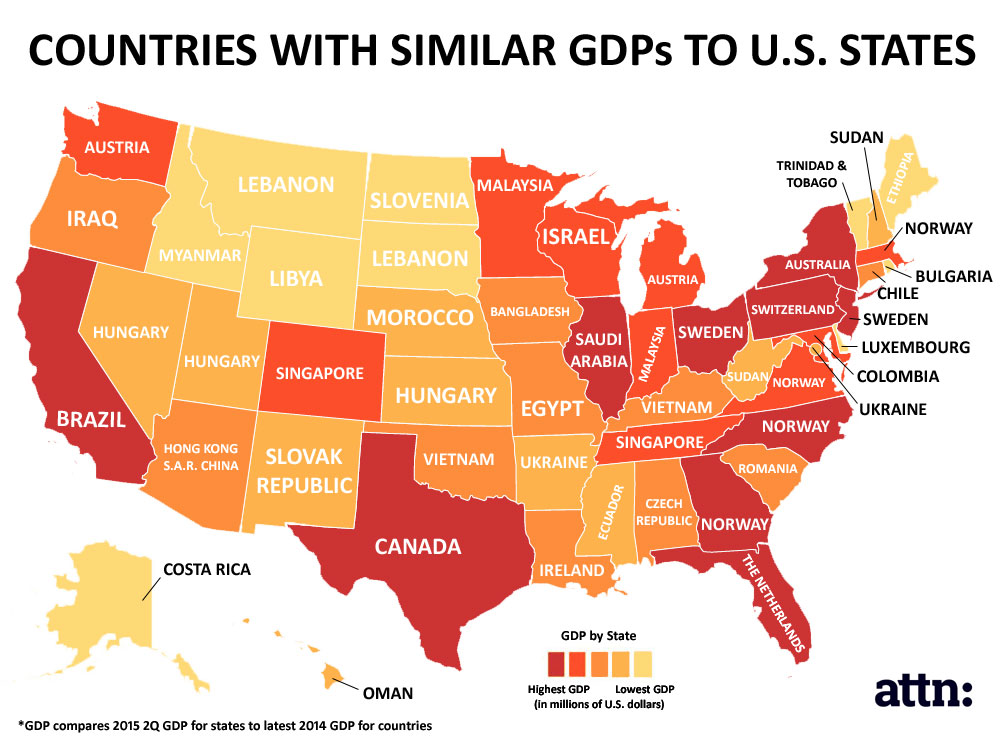This Map Shows How Massive U.S. State Economies Are
By:
It's difficult to comprehend the massive size of the United States economy, which was estimated in 2015 at just under $18 trillion.
But even the individual states and the District of Columbia have economies that, in most cases, are big enough to compare favorably with those of other nations.
How big? ATTN: crunched some numbers and put this map together, which matches recent statistics on the gross domestic product, or GDP, of each state with the GDP of comparable countries around the world. The results are staggering.

Wow.
The map makes use of data released by the U.S. Bureau of Economic Analysis for the states from the second quarter of 2015 and compares that data to the most recent international information from the World Bank.
By pairing the GDP of each state with its closest country match — in some cases a country's total economic output is slightly lower or slightly higher than a state's GDP — we gain perspective on exactly how large each state's economy is by global standards.
The biggest state economy is in California, clocking in at more than $2.4 trillion. That makes the Golden State's economy larger than that of Brazil (whose GDP was $2.3 trillion in 2014). If California were a separate country, its economy would have ranked as the seventh largest in the world in 2014, exceeded only by China, Japan, Germany, France, the United Kingdom, and the United States as a whole.
Texas has the second-largest state economy, which is just a bit smaller than that of Canada, our much larger neighbor (geographically speaking) to the north. With a GDP of $1.6 trillion, Texas is almost as large as Canada (with a GDP of $1.8 trillion), despite being 14 times smaller in land size.
Why GDP?
Because it tells us the overall size of a particular economy, GDP is a convenient way to measure one economy relative to another.
What exactly does it mean? According to CNBC, GPD represents "the total dollar value of all goods and services produced over a specific time period." Basically, it's everything that individuals and businesses produce, from the products themselves to the salaries of the workers.
By tracking GDP over time, economists use the indicator as a gauge of an economy's health.
But that's not everything. What GDP doesn't tell us is just as interesting as what it does.
California's GDP is larger than Brazil's, but how is that productivity distributed? The Golden State's population is only 38.8 million, compared to at least 200.4 million in Brazil. That means that California is significantly more economically productive than Brazil, despite having 81 percent fewer people.
Does that equate to higher wages in the state or a better quality of life just because the economy is healthier by one economic measure? It's hard to say.
According to some sources, Brazil's wages can be as much as 85 percent higher than those in California. But because of its booming economy and an influx of foreign investment, Brazil has a currency that is considered among the most inflated in the world, leading to the country's outrageous cost of living.
GDP may tell us that our state economies are massive in size, but there's a lot more to the health of an economy than its size or growth. The effect of the economy on its participants matters, too — and that can be much harder to quantify.
